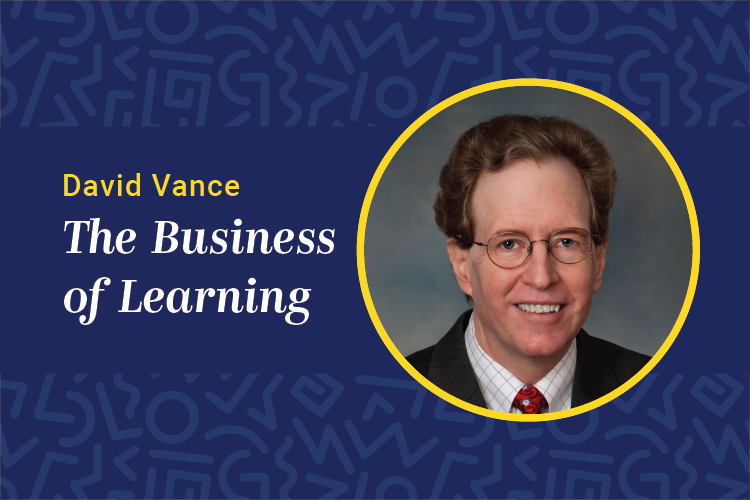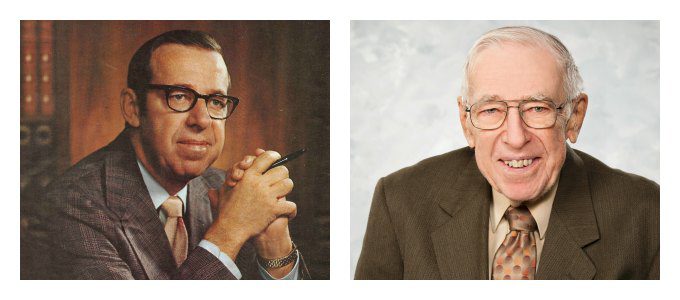Don Kirkpatrick passed away last month at age 90. Over the years, many of us had the opportunity to hear him present or attend one of his workshops, and we will remember his determination to help us all be better L&D professionals. We will also remember his sense of humor, his storytelling and his direct, commonsense approach.
Don is best known as the creator of the four levels (reaction, learning, behavior and results), which are used by virtually all L&D professionals around the world. He created this framework of four measures for his Ph.D. at the University of Wisconsin in 1953. He began to share them (not yet called the four levels) at conferences, and in 1959 ASTD (now called the Association for Talent Development) asked him to write an article for its monthly training magazine. Don happily agreed but told them that one article would not be sufficient. ASTD agreed to let Don write about one measure each month from November 1959 to February 1960. Since there were four measures published over four months, they became known as the four levels. The rest is history. (Don eventually wrote a book called “Evaluating Training Programs: The Four Levels,” which was published in 1993.)
The four levels were easy to remember and provided much-needed structure for the measurement and evaluation of learning programs, which is why they have achieved such universal adoption as a measurement framework. More importantly, though, and often not appreciated or implemented, Don helped focus the profession on starting with the end in mind and working backward to carefully plan your learning initiative. The end, the reason for investing resources in the learning program, is typically to solve a business need and to help an organization accomplish a goal.
In other words, the results (level 4) are not just an afterthought, something to be measured if you have time and resources. It is the whole point. Therefore, you must spend time upfront, before designing, developing and delivering the program, to reach agreement with business leaders about the role learning can play in achieving the goal and the expected impact or other measure of success.
Once you have this agreement, then work backward to determine what behaviors or knowledge are required and continue working backward to design and develop. In other words, use the four levels first to plan the learning, starting with level 4 and working down to levels 3, 2 and 1. Once the learning is deployed, then measure and evaluate the program’s success in the traditional order beginning with level 1 and progressing through level 4.
This focus on business results also led Don to stress the absolute necessity of engaging business leaders as partners in the success of the learning program. After all, the program is being deployed to employees in the business leader’s organization to accomplish the business leader’s goal (like increase sales by 10 percent).
Therefore, if the program is going to achieve the agreed-upon results, the business leader must actively sponsor the program by communicating the importance of the learning to employees upfront, setting expectations for using the training and then reinforcing the expected behavior after the training is complete. While L&D professionals can advise the business, only the business leader and managers in the leader’s organization have the power to ensure their employees actually apply the learning and demonstrate the new behaviors to achieve the goal. So, it will not work for L&D to operate in isolation and the business cannot simply “pass off” the training to the L&D department. Success requires a partnership from the beginning.
The four levels and Don’s business-like approach to training starting with the end in mind are both great contributions to our profession. And both remain works in progress. Almost all organizations today measure levels 1 and 2, but very few measure level 3 and even fewer evaluate the success of their programs at level 4.
This is troubling because the reason for providing the training in the first place was to have employees apply new behaviors or knowledge to solve a business problem or help accomplish a business goal. If we don’t measure application of the new behavior or the results, how do we know if we are providing value?
With regard to Don’s second contribution, the news isn’t any better. Few in our profession are truly starting with the end in mind by getting agreement with business leaders upfront on expected results or some other measure of success. And too few business leaders understand their critical role in communicating the importance of the learning to their employees before the training, and then reinforcing the learning and expected behaviors after the training. So, much work remains to be done to realize Don’s vision.
Don, thank you for your tremendous contributions and lifelong commitment to our profession. We will miss you.
Your friend,
Dave Vance















